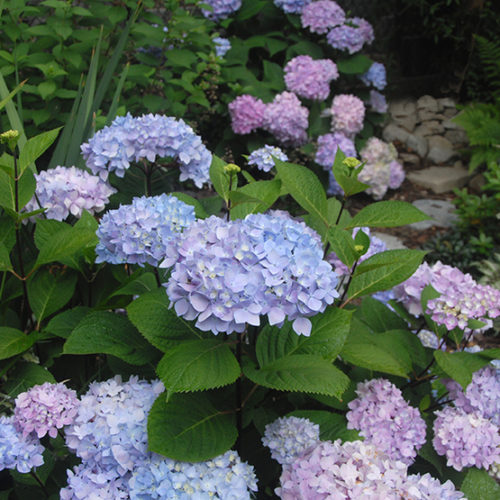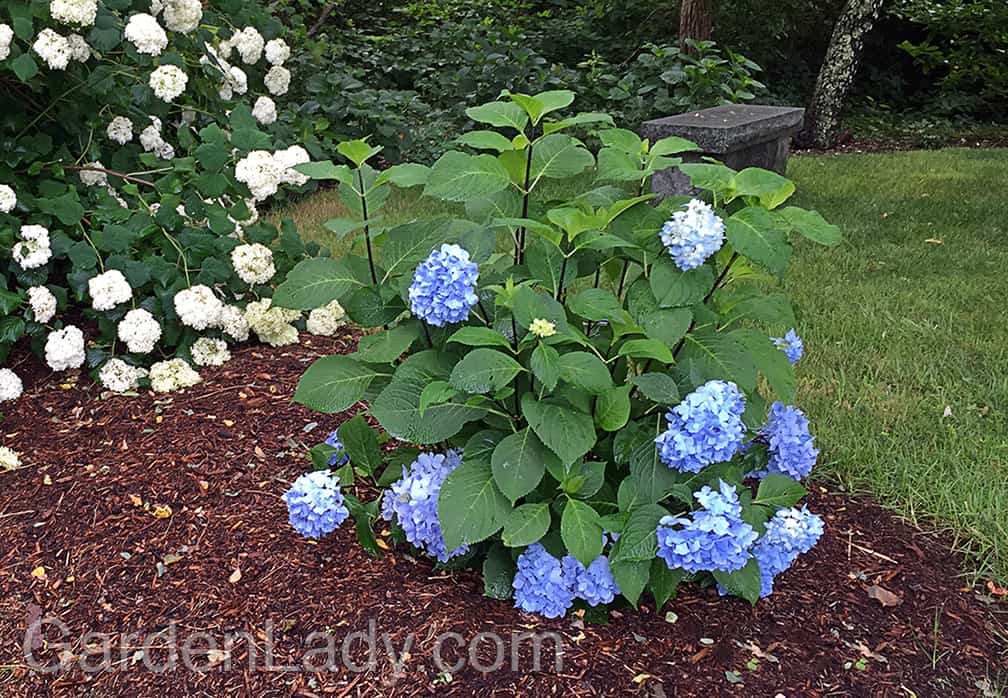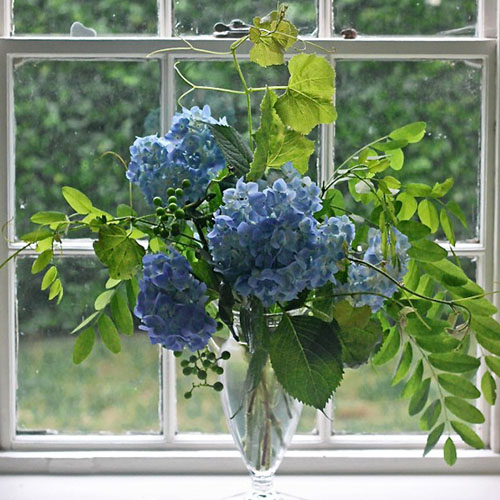Blue Enchantress Hydrangea: The Ultimate Guide To Growing This Stunning Shrub
Blue Enchantress Hydrangea: The Ultimate Guide to Growing This Stunning Shrub
The Blue Enchantress hydrangea is a stunning shrub that is sure to add beauty to any garden. With its large, mophead flowers that can range in color from blue to pink, this hydrangea is a popular choice for gardeners in all parts of the country.
In this blog post, we will provide you with the ultimate guide to growing Blue Enchantress hydrangeas. We will cover everything from choosing the right location to caring for your plants throughout the year. By the time you are finished reading this post, you will be an expert on growing these beautiful shrubs.
Introduction
The Blue Enchantress hydrangea is a hybrid variety that was first introduced in 1999. It is a cross between the hydrangea macrophylla and hydrangea serrata species. This hydrangea is known for its large, mophead flowers that can reach up to 12 inches in diameter. The flowers typically bloom in the spring and summer, and they can range in color from blue to pink, depending on the soil pH.
Blue Enchantress hydrangeas are hardy in USDA zones 5-9. They prefer partial shade and moist, well-drained soil. These shrubs are relatively easy to care for, and they can be propagated by division or by taking cuttings.
Main Content
Choosing the Right Location
The first step to growing Blue Enchantress hydrangeas is to choose the right location. These shrubs prefer partial shade, so they should be planted in a spot that receives at least four hours of sunlight per day. However, they can also tolerate full shade, especially in hot climates.
Blue Enchantress hydrangeas also prefer moist, well-drained soil. If your soil is sandy or clayey, you will need to amend it with compost or peat moss to improve drainage.
Planting
Blue Enchantress hydrangeas can be planted in the spring or fall. When planting, dig a hole that is twice as wide and as deep as the root ball. Backfill the hole with amended soil, and water the plant thoroughly.
Caring for Blue Enchantress Hydrangeas
Blue Enchantress hydrangeas are relatively easy to care for. These shrubs need to be watered regularly, especially during the first year after planting. They also benefit from a monthly application of fertilizer during the growing season.
In the fall, you can add a layer of mulch around the base of your hydrangeas to help protect them from the cold. You may also need to prune your hydrangeas in the spring to remove dead or damaged branches.
Troubleshooting
If your Blue Enchantress hydrangeas are not blooming, there are a few possible reasons. First, make sure that your plants are getting enough sunlight. Hydrangeas need at least four hours of sunlight per day to bloom.
Second, check the soil pH. Blue hydrangeas prefer acidic soil, with a pH of 5.5 to 6.5. If your soil is alkaline, you can add sulfur to lower the pH.
Finally, make sure that your plants are getting enough water. Hydrangeas need to be watered regularly, especially during the hot summer months.
Conclusion
Blue Enchantress hydrangeas are stunning shrubs that are sure to add beauty to any garden. With their large, mophead flowers and their relatively easy care requirements, these shrubs are a great choice for gardeners of all levels of experience.
The Blue Enchantress hydrangea is a beautiful and versatile plant that can add a touch of elegance to any garden. It is known for its large, blue-purple blooms that can last for several months. Blue Enchantress hydrangeas are relatively easy to care for and can thrive in a variety of conditions.
If you are interested in learning more about Blue Enchantress hydrangeas, I encourage you to visit Home Gardening. This website has a wealth of information about the plant, including its history, care requirements, and varieties. You can also find photos and videos of Blue Enchantress hydrangeas in bloom.
FAQ of blue enchantress hydrangea
What is Blue Enchantress hydrangea?
Blue Enchantress hydrangea is a deciduous shrub that is known for its large, blue flowers. It is a relatively new variety of hydrangea, having been introduced in 2006. Blue Enchantress hydrangea is hardy in USDA zones 5-9.
How do I care for a Blue Enchantress hydrangea?
Blue Enchantress hydrangea is relatively easy to care for. It prefers full sun to partial shade and well-drained soil. It should be watered deeply and regularly, especially during the first year after planting. Blue Enchantress hydrangea is also a heavy feeder, so it should be fertilized in the spring and fall.
Why is my Blue Enchantress hydrangea not blooming?
There are a few reasons why your Blue Enchantress hydrangea might not be blooming. One possibility is that it is not getting enough sunlight. Blue Enchantress hydrangea needs at least 6 hours of sunlight per day in order to bloom. Another possibility is that the plant is not getting enough water. Blue Enchantress hydrangea needs to be watered deeply and regularly, especially during the summer months. Finally, it is also possible that the plant is not getting enough fertilizer. Blue Enchantress hydrangea is a heavy feeder, so it should be fertilized in the spring and fall.
What is the best way to prune a Blue Enchantress hydrangea?
Blue Enchantress hydrangea should be pruned in the spring, before new growth begins. The best time to prune is in early March, but you can also prune in late February or early April. When pruning, remove any dead, diseased, or damaged branches. You can also thin out the plant by removing some of the older branches.
What are some common pests and diseases that affect Blue Enchantress hydrangea?
Blue Enchantress hydrangea is susceptible to a few common pests and diseases. These include:
- Aphids: Aphids are small, sap-sucking insects that can cause leaves to wilt and curl. They can be controlled with insecticidal soap or neem oil.
- Japanese beetles: Japanese beetles are large, metallic green beetles that can defoliate plants. They can be controlled with insecticides.
- Powdery mildew: Powdery mildew is a fungal disease that causes leaves to develop a white, powdery coating. It can be controlled with fungicides.
How can I prevent pests and diseases from affecting my Blue Enchantress hydrangea?
There are a few things you can do to prevent pests and diseases from affecting your Blue Enchantress hydrangea:
- Plant in a well-drained location.
- Water regularly, but do not overwater.
- Fertilize in the spring and fall.
- Inspect the plant regularly for signs of pests or diseases.
- Take action promptly if you see any problems.
Image of blue enchantress hydrangea
- Blue Enchantress Hydrangea in Full Bloom
- Close-up of Blue Enchantress Hydrangea Flowers

- Blue Enchantress Hydrangea with Pink Shades

- Blue Enchantress Hydrangea in a Garden Setting

- Blue Enchantress Hydrangea in a Vase

- Blue Enchantress Hydrangea in Fall

- Blue Enchantress Hydrangea in Winter
- Blue Enchantress Hydrangea Leaf

- Blue Enchantress Hydrangea Seed Pod

- Blue Enchantress Hydrangea Nursery Plant

Post a Comment for "Blue Enchantress Hydrangea: The Ultimate Guide To Growing This Stunning Shrub"